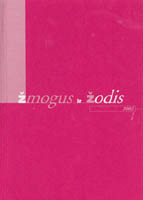Mokslinių tekstų daiktavardžių ir būdvardžių kirčiuočių dažnumas
Frequency of Stressed Nouns and Adjectives within Scientific Texts
Author(s): Vida ŽilinskienėSubject(s): Language and Literature Studies
Published by: Vytauto Didžiojo Universitetas
Keywords: frequency dictionary; nouns; adjectives; stress paradigm; frequency.
Summary/Abstract: This article analyses the data of a frequency dictionary formed on the base of Lithuanian scientific texts published in 1990-1995. The correlation of stress paradigms of nouns and adjectives within the intensive frequency zone of a frequency dictionary are discussed. The following conclusions have been drawn: 1. Root stress nouns (72,37 % of all nouns), the majority of which being 1 stress paradigm words are the most frequent within Lithuanian scientific texts. 2. The nouns of 1 stress paradigm usually have accent on a penultimate syllable (31,52 % of all used words), the most frequent words being with suffixes -ýbaor -ýbė. The words with suffixes –(ãv)imas, -ãcijaare rather frequent among nouns of 1 stress paradigm as well. 3. The nouns of 2 stress paradigm comprise 33,59 % of all nouns. The words with suffixes -ìmas, -ùmas, -ūrà, -eñtasare rather frequent among nouns of 2 stress paradigm. 4. Adjectives of 1 (38,55 %) and 4 (31,16 %) stress paradigm are the most frequent within Lithuanian scientific texts. 5. Adjectives with suffix -inis, -ė are the most frequent among suffixal adjectives of 1 and 2 stress paradigm. They comprise 78,99 % of all adjectives of 1 stress paradigm and 95,31 % of all adjectives of 2 stress paradigm. 6. The nouns and the adjectives of 3 stress paradigm are the least frequent words in the scientific texts.
Journal: Žmogus ir žodis
- Issue Year: 06/2004
- Issue No: 1
- Page Range: 48-53
- Page Count: 6
- Language: Lithuanian

